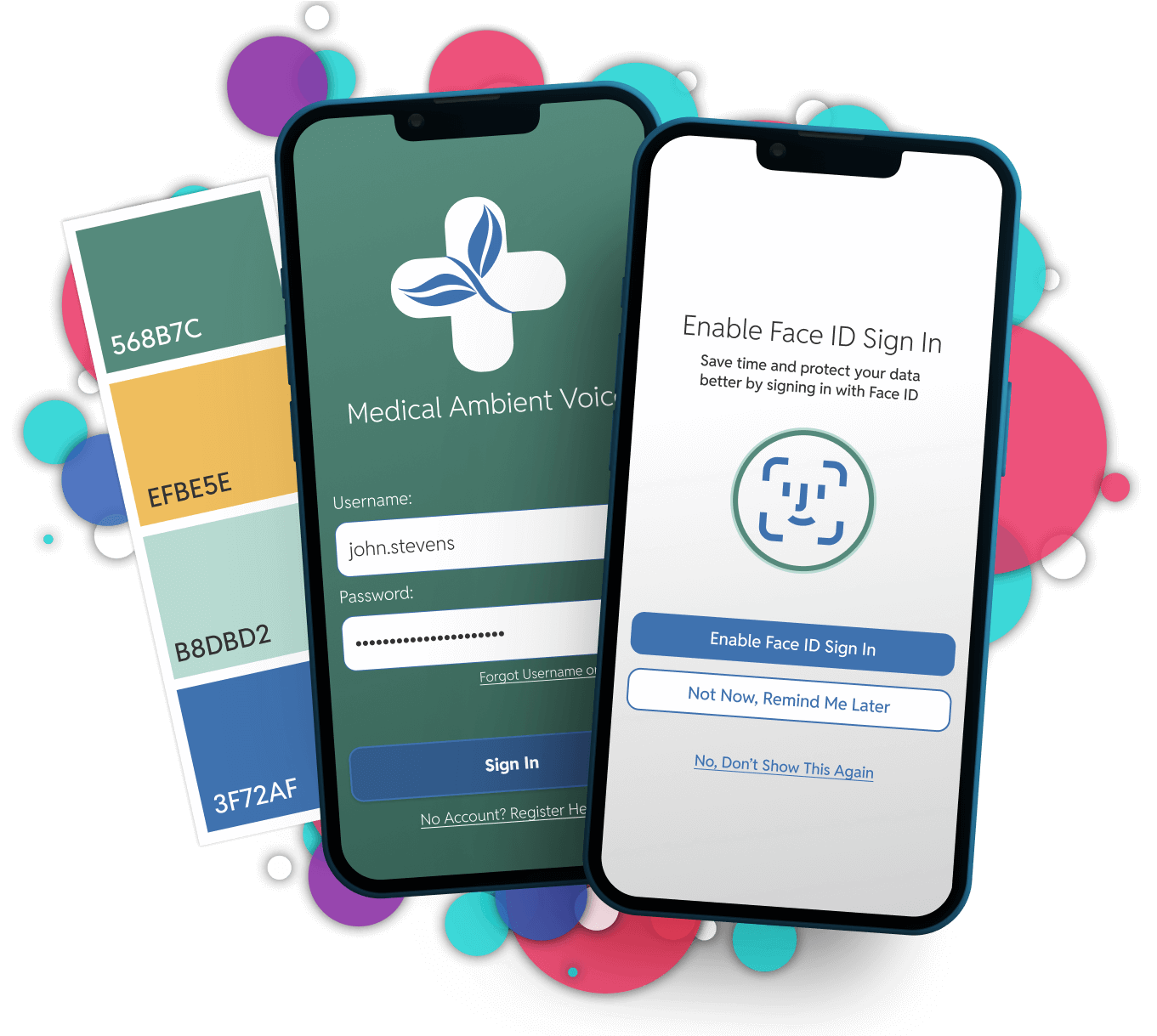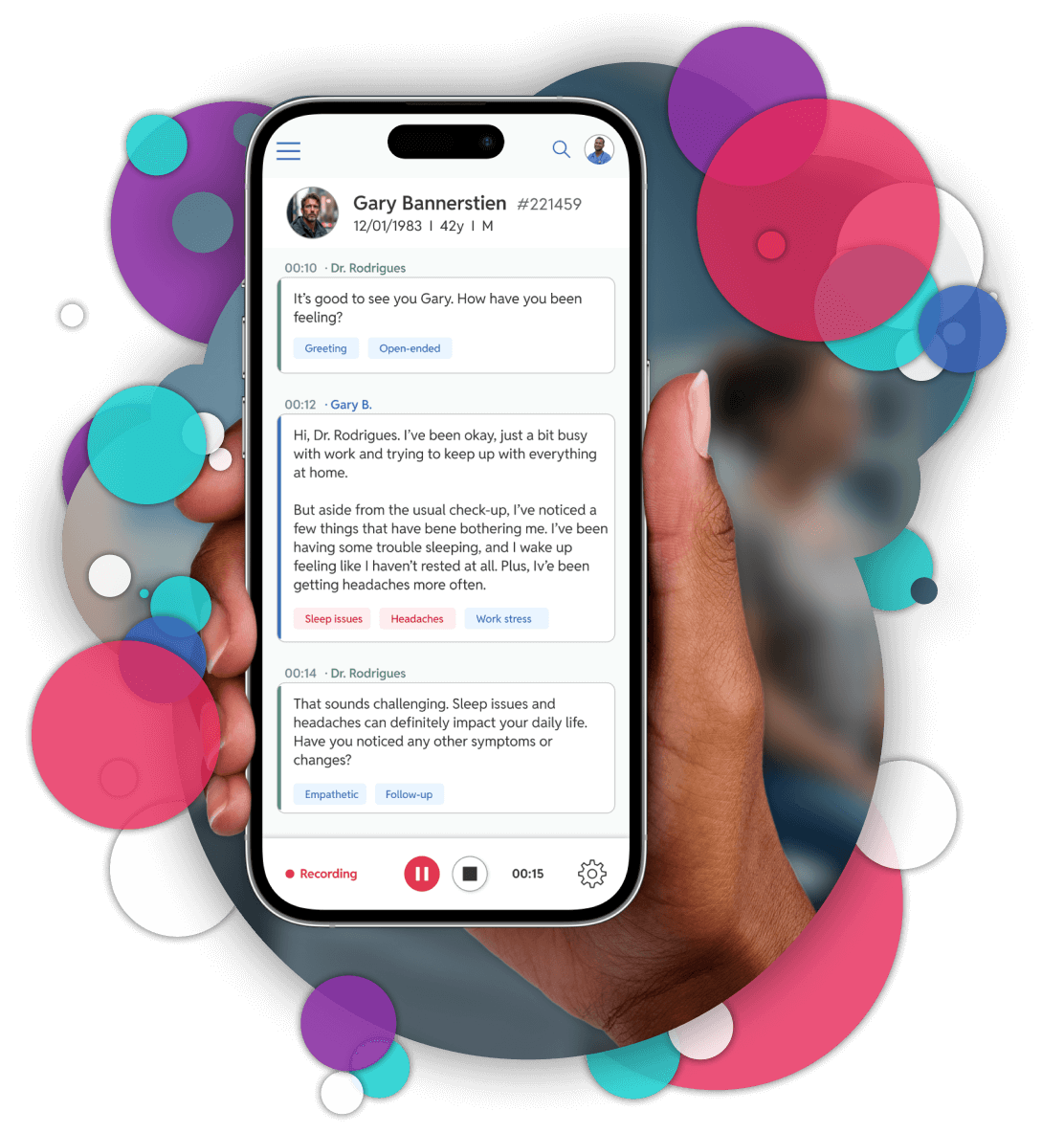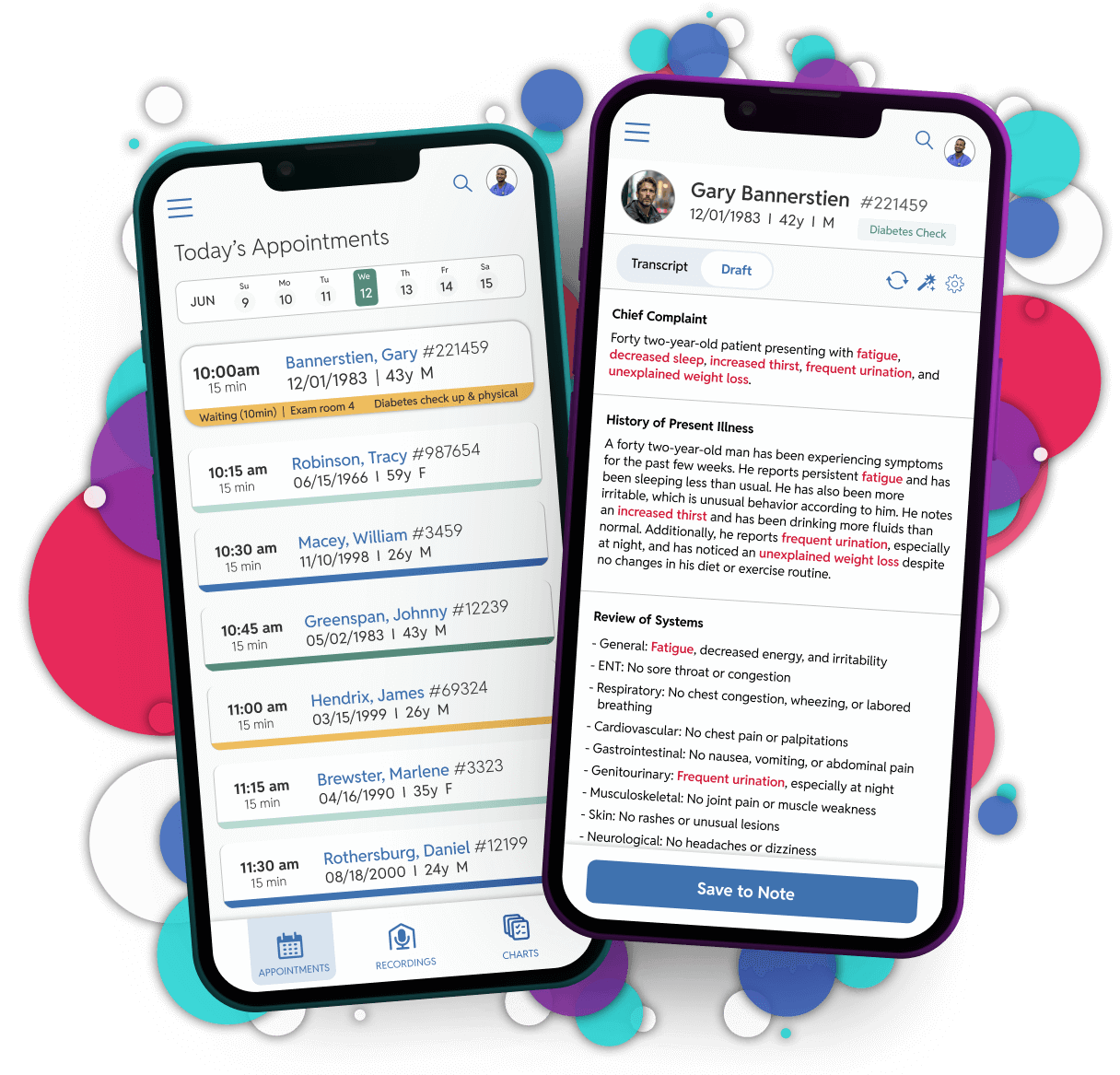Ambient Voice Technology Transforms Patient Care
The Power of Presence: How We Helped Burnt Out Physicians Reclaim Precious Pajama Time, Increase Patient Facetime, & Provide Better Overall Care
The Challenge: When Technology Becomes a Barrier
Here's a sobering reality about modern healthcare: physicians spend nearly half their day looking at screens instead of patients. For one leading EHR (Electronic Health Record) company, this wasn't just a usability issue – it was a crisis of connection threatening the very heart of patient care.
Their physicians were facing a painful double-bind: either maintain eye contact with patients and work late into the evening completing notes (the dreaded "pajama time"), or type furiously during appointments while trying to maintain some semblance of connection. Neither option was sustainable, and both were taking a toll on physician wellbeing and patient satisfaction.
Our initial research revealed a healthcare system struggling under the weight of its own documentation requirements. The numbers painted a stark picture: physicians were spending up to 6 hours daily on EHR documentation, with an average of 2.5 hours of "pajama time" per physician per day. Less than 50% of appointment time was spent making eye contact with patients, leading to rising physician burnout rates and decreased patient satisfaction.
Even more telling were the hidden costs. Medical errors increased by 30% during the final hours of long documentation sessions. Patient satisfaction scores showed a direct correlation with physician screen time – the more a doctor typed during appointments, the lower their satisfaction ratings dropped. Meanwhile, physician burnout rates had reached an alarming 63% among those reporting more than 2 hours of daily after-hours documentation.
Industry
Focus
Impact
Challenge
Our Approach: Understanding the Full Clinical Journey
Rather than jumping straight to solutions, we started with extensive discovery research to understand the complete physician workflow. Our comprehensive research included:
- 45+ hours of clinical shadowing across different specialties
- In-depth interviews with 30 physicians
- Analysis of over 100 daily schedule patterns
- Documentation time studies across multiple practice types
This thorough investigation revealed critical insights about workflow breakpoints and context switching costs. Perhaps most importantly, it helped us understand the emotional toll of constant documentation – something that wouldn't show up in simple time-motion studies.

Technical Deep Dive: Making Magic Look Easy
While the interface appears simple to users, the underlying system is a carefully orchestrated dance of multiple technologies:
Natural Language Processing Pipeline
- Custom medical vocabulary integration
- Context-aware sentence parsing
- Automated medical coding verification
- Real-time structure analysis
Integration Architecture & data Handling
- Connect with multiple EHR systems
- Maintain HIPAA compliance across all touchpoints
- Handle offline documentation scenarios
- Provide real-time sync status feedback
Security & Compliance Mitigation
- End-to-end encryption for all voice data
- Automatic PHI detection and handling
- Role-based access controls
- Comprehensive audit logging

